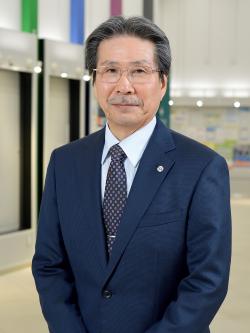- HOME
- Nagaoka University of Technology
- About Us
- President and Executive suite
- Message and Biography
Message and Biography

Nagaoka University of Technology was established in 1976 as an institute of technology emphasizing research and education at the graduate level, with a central focus on the development of practical technology. While other universities generally place emphasis on academic research, Nagaoka University of Technology emphasizes hands-on practice designed to give rise to academic research. Accordingly, all our undergraduate students must complete Jitsumu-Kunren, a long-term internship of around five months at institutions located both in Japan and overseas. At the graduate level, students engage in joint research with our partners in industry and business with a view to meeting societal needs and solving problems in applied settings. The aim is to help students acquire a firsthand understanding of the human qualities and practical skills needed to become a leading engineer, along with the ability to come up with ideas through practice—through the process of recognizing and experiencing various phenomena and the actual conditions experienced in industrial technology on-site. This process is the foundation for the “GIGAKU (Science of Technology)” concept that underpins our education.
Through initiatives such as our Twinning Program—which we were the first Japanese national university to implement—we have forged ahead with improving and enhancing connectivity between our undergraduate and graduate-level education, with the intention of nurturing talented engineers who can operate on the global stage. As these efforts won recognition, in 2018, we were appointed by the United Nations as a hub university for Goal 9 (industry, innovation and infrastructure) of the Sustainable Development Goals (SDGs) and received accreditation from UNESCO as a GIGAKU SDG Engineering Education base. Furthermore, we are committed to developing outstanding human resources in close partnership with businesses and overseas universities through the WISE Program (Doctoral Program for World-leading Innovative & Smart Education), which was adopted by the Ministry of Education, Culture, Sports, Science and Technology in 2018. The WISE Program is designed to nurture individuals who can drive innovation with the aim of achieving the SDGs, making use of information technology that leverages the root technologies underlying all industries, which center on materials science and power electronics and control, two areas in which Nagaoka University of Technology boasts world-class research capabilities. Going forward, we intend to tackle fields of education and research such as the environment, biotechnology, and disaster prevention/mitigation—areas in which we are developing strengths.
Amid the COVID-19 pandemic that began last year, we are utilizing information technology to respond to new modes of living, advancing lessons delivered online, on-demand, or as a hybrid of face-to-face and online learning. In the future, alongside further development in smart and remote technology, we will continue to build high-level systems for education and research, including those which integrate virtual and real spaces, while developing high-quality education and research environments that are not restricted by time and space and leave no one behind.
Nagaoka University of Technology will work to accelerate the progress of information technology, taking on challenges in unexplored domains and untrodden fields, armed with rich human qualities and a high level of GIGAKU ability (ability in the field + ability to research + ability to innovate + ability to practice), nurturing resilient global engineers with a commitment to technological innovation.
President KAMADO Shigeharu
Biography
| Name | KAMADO Shigeharu |
|---|---|
| Date of birth | April 12th, 1957 |
| Birth place | Ehime Prefecture, Japan |
| Degree | Doctor of Engineering |
| Education |
|
| Career |
|
| Research area | Material processing and microstructure control, Structural materials and functional materials |
| Awards |
|
President and Executive suite
- Message and Biography
- Administrative Staff
